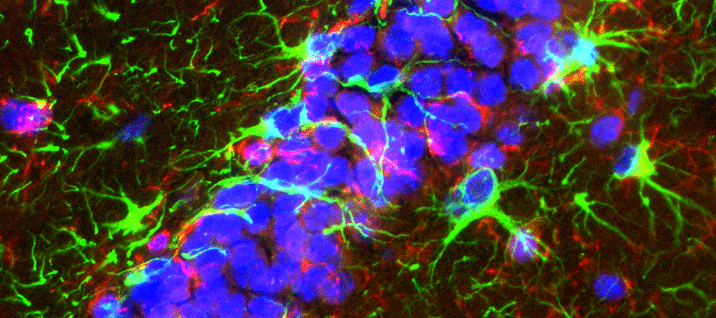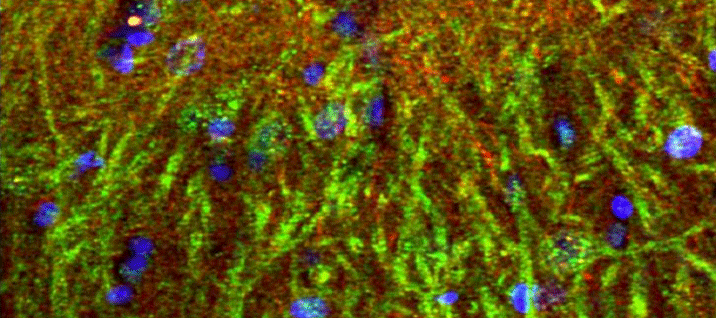
Epilepsy
A major research emphasis in our lab involves the use of microarray and associated technologies to identify novel targets and pathways involved in the basic cellular and molecular mechanisms of epilepsy. Our recent work and that of others highlight a role for cyclooxygenase-2 (COX2) signaling pathways in the cognitive deficits, impaired synaptic inhibition, and neurodegeneration caused by seizures. We have developed a mouse with COX2 conditionally ablated in principal forebrain neurons and are using this mouse to study the role of neuronal COX2 in epilepsy. We also employ a chemical biology approach to develop novel small molecule modulators of prostaglandin receptors and are determining whether they interrupt the development of epilepsy. As a whole our work integrates information from a variety of experimental strategies to contribute to a better understanding of epilepsy, with broad implications for other brain disorders including stroke and schizophrenia.
Glutamate Receptors
Ionotropic glutamate receptors mediate the vast majority of excitatory synaptic transmission in the brain. Another research effort in our lab focuses on regulation of glutamate receptor-mediated synaptic transmission in the brain. The relative abundance of the GluA2 subunit in functional AMPA receptors controls the channel’s ion permeation properties, such as Ca+2 permeability, polyamine blockade and rectification.
We have shown that expression of the GluA2 subunit after seizures is controlled by a coordinate mechanism involving HDAC-mediated changes in chromatin structure leading to transcriptional repression, and translational repression or derepression depending on the transcript that is mediated by alternative 5’UTR and 3'UTR. Our current studies target mechanisms by which prior activation of selected G-protein coupled receptors potentiates kainate receptors. This receptor crosstalk points towards a novel mechanism of synaptic plasticity in hippocampal networks.
Latest News
-
Ray Dingledine was interviewed by International Innovation magazine. Read the interview which includes Dr. Dingledine's insight into the field of pharmacology and a new route to clinical treatment of epilepsy and brain injury.
-
Ray Dingledine discusses the impact sequestration budget cuts could have on medical research at Emory and nationally.
Read the interview about sequestration with Ray in the Emory Report.
-
Ray Dingledine was inducted into the Institute of Medicine, one of the highest honors in the fields of health and medicine. Read the story announcing Ray's election to the IOM and a brief history of his research accomplishments.
-
Ray Dingledine was interviewed by NPR regarding his recent award by NIH for the Blueprint for Neuroscience Research project.
-
Hear Ray's PodCast on glutamate receptors from ScienceWatch.com.


